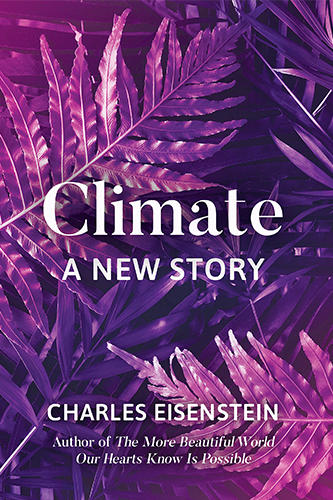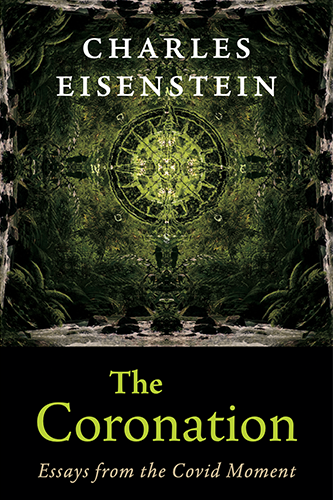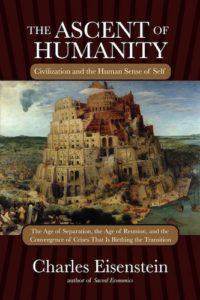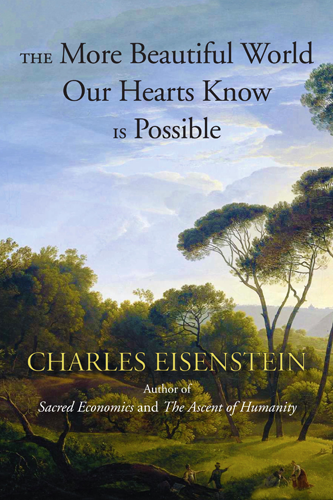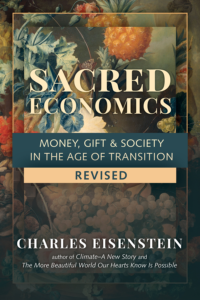The More Beautiful World Our Hearts Know Is Possible
Chapters
Chapter 31: Disruption
It is useless to attempt to reason a man out of a thing he was never reasoned into.
—Jonathan Swift
The world as we know it is built on a story. To be a change agent is, first, to disrupt the existing Story of the World, and second, to tell a new Story of the World so that those entering the space between stories have a place to go. Often, these two functions merge into one, since the actions we take that are part of the telling of a new story are also disruptive to the old.
This is how I see my work, the work of activists, and even on some level the work of artists and healers. Many of the stories I have told in this book exemplify the disruption of the old story: Pancho’s interaction with the policeman, for instance. I will share some more examples soon, but let’s start by considering a class of people that is the source of the greatest despair for many people I know. It is the class of “people who just don’t get it.”
When I speak publicly, I usually get a question along these lines: “To create a more beautiful world requires a mass change in values and beliefs, and I just don’t see it happening. People are too stuck, too ignorant. They’ll never change. Not the people in power, and not my conservative brother-in-law. What can we do to get people unstuck?”
One thing that almost never works is to overcome the subject’s opinions through the force of logic and evidence. This should not be surprising, given that people do not form their beliefs based on evidence or reason to begin with. Rather, we use reason to arrange the evidence into a story aligned with an underlying state of being that includes emotional tendencies, old wounds, patterns of relationship, and outlook on life. This story interlocks with other stories, and ultimately with the deep, invisible personal mythologies that define our lives. These personal mythologies in turn are woven into our cultural mythology, the consensus reality that goes as deep as civilization itself. Because beliefs are typically part of a larger story that includes one’s identity and value system, a challenge to them is often taken as an assault, triggering various defense mechanisms to preserve that larger story. You’ll be ignored, written off as a hippie, lefty, enviro, or dreamer, or rebutted with whatever counterclaims are conveniently at hand. Perhaps your target will divert the conversation onto some trivial point, a misstatement, a grammar error, or a personal slight, thereby invalidating everything you say.
Such people are not like you. Unlike them, you choose your beliefs based on evidence and reason. Not like the Republicans! The liberals! The Tea Party! The religious fundamentalists! The credulous New Agers! The medical establishment! That’s right, you have arrived at your opinions through an open-minded consideration of the evidence, while those who disagree with you are mired in ignorance, prejudice, and plain old stupidity.
Let’s be honest with ourselves. Who among us can look back on our lives and deny that most of the time, we too closed our minds to the truth while believing them open, dismissing challenges in just the ways I’ve described? What makes you think you are any different today in the fundamental ways you form and uphold beliefs?
The idea that we base beliefs on reason and evidence, or at least the ideal of so doing, has deep roots in Western philosophy and the worldview from which it arises. It echoes the axiomatic method in mathematics, the philosophical program of establishing “first principles” and reasoning upward from those, and the objectivism of science that says that we can find truth through the impartial testing of hypotheses about a reality outside ourselves. It is reflected in the idea that one must start any argument with clear definitions of terms. Well, any argument with your Republican brother-in-law or your anti-vaccine aunt or your pro-vaccine cousin (pick the one that tweaks you) should confirm that this approach just doesn’t work. It quickly becomes apparent that it is impossible to agree even on what the facts are, let alone what the facts mean.
It gets worse. A series of studies at the University of Michigan in 2005 and 2006 showed not only that people routinely dismiss facts that don’t fit their beliefs, but that they actually harden their beliefs when presented with contradictory facts, perhaps in an effort to avoid cognitive dissonances. Moreover, the most misinformed people had the strongest opinions, and the most politically sophisticated thinkers were the least open to contrary information.
The facts arrive at our brains already prefiltered by the distorting lens of the stories in which we operate. The debate over climate change illustrates this nicely: when one digs into it, one finds that it is impossible to be sure what the actual data are. Certainly there are many studies and reports, but there are also accusations of exclusion of contradictory data, bias, sloppiness, and outright dishonesty in those reports. Ultimately, the evidence one accepts is strongly colored by one’s trust or lack thereof in authority, which is colored by personal history, perhaps one’s relationship to one’s father, and so forth. Consider, for example, appeals to the “near-unanimity of climate scientists.” (Is there really near-unanimity? Whether or not you accept that pronouncement again depends on your trust in the authority of the source that is saying it. Do you trust the New York Times on that? Or do you trust a maverick scientist ostracized by his profession?) Moreover, appeal to near-unanimity among scientists invokes the basic integrity of science as an institution, which in turn rests within larger and less visible stories.
My point here is not to question climate change; it is merely to illuminate how evidence, rather than being the basis of belief, is filtered by belief to maintain the integrity of a story. Good storytellers understand this and do it on purpose, using facts, studies, and so forth as elements of their story. In the climate change debate, both sides do it. You might suppose that an intelligent, rational person (like yourself) would never deny global warming if only they looked at the evidence in an unbiased way. But guess what—your opponents think the same thing about their position. Is the reason for our collective folly just that the smart people aren’t in control of things? Or could it be that we have been in the grips of a story that necessarily imprints its precepts onto the world?
I met a really smart lady recently. She was a vice president at Nestlé Corporation. I overheard a college student questioning her glowing portrayal of Nestlé’s social and environmental policies. The student bravely interrogated the VP about their leading beverage category, bottled water. “Do we really need such a thing?” she asked. And “I understand you are using 40 percent less plastic per bottle, but wouldn’t it be better to use no plastic at all?”
To each query, the VP had a ready, methodical response. Bottled water meets a real need in a society on the go. And did you know that one raw ingredient for making the plastic bottles is a by-product of producing gasoline from petroleum? If it doesn’t go toward bottles, it will end up as some other plastic product or dumped directly into the environment. Glass uses way more energy to produce. And tap water is no longer pure.
I was impressed not only by her evident sincerity, but also by her patience, her attentive listening, and her lack of animosity in the face of what must be frequent attacks. Nestlé, after all, is notorious among activists as a corporate villain and the target of a decades-long boycott over its marketing of infant formula to indigent mothers. It has been accused of overpumping from mineral springs, collaboration with the Burmese junta, union-busting in Colombia, buying cacao from farms that use child labor, and so on. The contrast between this reputation and the VP’s fervent, heartfelt exposition of Nestlé’s environmental virtues was such that a few left-leaning folks had to step out of the auditorium.
How to explain this contrast? Let’s try three theories.
1. The woman is a glib liar paid well to make the company’s case. Either she is cynically aware of the truth obscured by her lies, or she is in a state of deep, self-serving denial. Either way, she cherry-picks a few positive gestures toward the environment (“Nestlé protects orangutans!”) and draws from reams of tendentious evidence that the company’s PR department compiles to make anyone who questions the company’s practices seem naive.
2. What the woman says is true. The company has learned from its mistakes to become a leader in social and environmental responsibility. There are many well-meaning people who still criticize the company, but that is because they don’t know the true story: not only is Nestlé leading the way toward sustainability, but the industry as a whole is improving its practices. There are still challenges to deal with, but everything is moving in the right direction. The people in industry care about the environment just like you do. They get it now, and with your help they will continue making progress.
I hope I have done justice, in the second theory, to the Nestlé VP’s viewpoint. I had a conversation later on with her, and found her to be very human, highly intelligent, and not averse to introspection. My impression is that she deeply and truly believes in her company and her work. So let me offer a third explanation:
3. Not only does she sincerely believe everything she says, but it is irrefutable from within her frame of reference. If we take for granted the endless acceleration of modern life, then the convenience of safe bottled water is indeed a boon for people who otherwise would drink sugary soft drinks. It is a boon as well if we take for granted the continuing deterioration of municipal tap water, its chlorination and chemical contamination. And if we take for granted our current petroleum-based economy, it is, for all I know, true that plastic bottles don’t add much harm.
The VP’s positions are unassailable unless we can expand the scope of the conversation. We have to ask questions at the level of “What role do plastic bottles play in the accelerating pace of modern life, why is this acceleration happening, and is it a good thing?” “Where does our busyness and need for convenience come from?” “Why is our tap water becoming undrinkable?” “Why do we have a system in which it is okay to produce waste products that are unusable by other life-forms?” And “Is the ‘sustainable growth’ championed by Nestlé possible on a finite planet?”
I believe the conversation must go deeper still. What that Nestlé VP did to justify her company, others can do to justify our whole civilization, as long as we grant them certain premises about the nature of life, self, and reality. For example, if we grant the premise that primitive life was “solitary, poor, nasty, brutish, and short,” then any doubts about the overall beneficence of technology run into a brick wall. Similarly, if we grant the premise that nature bears no inherent tendency toward organization and that life is just a random collocation of lifeless, generic building blocks bumped around by purposeless forces, then clearly we need have no scruples about seeking to conquer nature and turn it toward human ends. And finally, if we grant the premise that each of us is a discrete, separate self seeking to maximize genetic self-interest, then ultimately there is no arguing over the broad legal and economic parameters of our society, which seek to overcome that wanton nature and channel it toward pro-social ends.
The Nestlé VP’s views are more or less sound within the framework I have described above, the framework of “making life better through technology,” of the progressive conquest of inner and outer nature. Her views will not change until that framework crumbles. They are completely at home within the Story of Ascent.
I heard another smart guy one morning on The Diane Rehm Show, an energy industry consultant. One of the topics was the controversial Keystone XL pipeline, intended to transport Albertan tar sands oil to refineries on the Gulf Coast. The consultant made the following point, which I will paraphrase: “Look, if we don’t build the pipeline, the refineries on the Gulf Coast are just going to refine heavy crude from somewhere else, and the tar sands will send their oil to Asia instead of the United States. Stopping the pipeline won’t have any impact on climate change or ecosystem destruction. That oil is going to be extracted and refined anyway, so it might as well be done in a way that brings jobs to the United States.”
Philosophers of ethics would have fun demolishing these arguments, which would apply just as well to selling body parts from the Nazi concentration camps. Whether I sell them or not, the camps are still operating, so I might as well put those body parts to good use, right? The point here, though, isn’t to expose the logical flaws in the justifications for the Keystone XL pipeline or plastic bottles, but to show how the things we take for granted determine our moral choices. In the reality bubble they inhabit, their arguments make perfect sense. If it is indeed an unalterable fact of the universe that the tar sands will be extracted, then it would be vain and counterproductive to disdainfully refuse to engage that fact. If our current petroleum-based civilization is unalterable, then we might commend Nestlé for putting its waste to good use. If we take the growing busyness of people’s lives for granted, then we must welcome the conveniences that make modern life tolerable. Within their operating paradigms, both these smart people are doing good.
How do you know you are not like that Nestlé VP? How do you know the speck in her eye isn’t the image of the log in your own? What you and she probably share in common, and what the climate change denier and the climate change alarmist share in common, is the belief that facts and logic are on one’s own side, and that one’s position is based on them. But obviously, the elusiveness of facts and the ease with which reason can be put in service of a story tell us that to change beliefs—and our beliefs must change—requires a more comprehensive, holistic change in our stories and all that are attached to them, all the way down to our sense of self, habits, and basic perceptions of the world. It is the totality of these things that I call a Story of the World.
Even “facts” as basic as the universal constants of physics or the Second Law of Thermodynamics depend, on some level, on subjective choices about who and what to believe. Rupert Sheldrake describes, for example, how the accepted value for the speed of light changed by 20 km/sec for a span of eighteen years in the 1930s and ’40s—a change consistent across all experiments around the world. Then in 1945 the speed of light reverted back to its original pre-1928 value. The discrepancy far exceeds the margin of error of the measurements. Sheldrake also documents variability in G, the universal gravitational constant. Could it be that facts are what the etymology of the word suggests—something that we make, as in a “factory”?
Back now to your brother-in-law. If you can’t out-argue him, how can you change his beliefs? On a broader level, as people seeking to change the world, how can we change our society’s story?
Reasoning from the situationist perspective, people gravitate toward a set of beliefs resonant with the totality of their life experiences. These are the foundation of the beliefs, of which what we call “opinion” is only the most visible, superficial aspect. Opinions are symptoms of a state of being. Therefore, to change opinions and beliefs, one must change the foundation of the “situation”; one must give to someone an experience that doesn’t fit the existing story, or that resonates with a new one. The same applies to changing the stories that operate on an organizational, social, or political level.
One example of a disruption to the old story is a classical labor action such as a strike. It does not always do for workers to politely ask for better wages and working conditions, because the “story”—the system of agreements, conventions, business practices, market expectations, shareholder expectations, and so forth—has no room for the bosses to say yes. It is necessary to render that story inoperative. To be truly radical agents of change, though, we must be careful in so doing not to invoke and therefore reinforce the deeper story of “evil.” The strike statement could embody the sentiment “We are going on strike so that our needs and interests, and the unfairness of our situation, become visible. By making injustice visible, we give all involved the chance to do the right thing,” as opposed to the more inflammatory “The greed of the company has gone far enough! We’re going to force management to do the right thing, even though they don’t want to.” The strikers needn’t entertain the expectation that nonjudgmental words will mitigate the violence of the authorities’ response, but it could affect public opinion.
No matter what the statement, the effect of a labor stoppage is disruptive to the story we call “business as usual.” On a larger scale, a general strike does the same thing. It makes it impossible for people wedded to the belief that everything is fine to continue holding that belief.
One of the most powerfully disruptive proposals emerging at the present time is the idea of a debt strike. Like a labor strike, it goes far beyond mere symbolism, far beyond “raising awareness,” but strikes at the heart of the agreements and narratives that run our society. If a significant proportion of individuals and nations repudiated their debts, the present financial order would collapse, clearing the field for the kind of radical reforms that cannot even enter the minds of policymakers today. At present, even minimal reforms, reforms that are not nearly enough to reverse the despoliation of the biosphere and the impoverishment of billions of people, are too much to merit serious political consideration. A debt strike would puncture the illusion that there is no alternative. As long as most people acquiesce to the present system, those heavily invested in its perpetuation will find ways to keep pretending it is sustainable.
Here again, the strike can be framed in language that doesn’t reinforce us-versus-them thinking. We should be especially wary of framing the issue in terms of greed. Whether it is corporate greed, bankers’ greed, or the greed of the wealthy, greed is a symptom, not a cause, of our core problems. The same is true for immorality and corruption. Railing against the perfidies of the immoral corporations and corrupt banks gratifies our rage and makes us feel self-righteous, but it is ultimately a distraction from deeper systemic problems. Therefore, I would suggest a debt strike mission statement along the following lines: “Our current debt-based financial system holds students, families, and governments hostage, while even creditors are subject to the relentless pressure to maximize returns. It is time for this system to end. We are therefore refusing to pay our debts, to highlight the unfairness of the system that is driving society and the planet to ruin.”
What do we really want? Is it to triumph over the bad guys and be the winners? Or is it to fundamentally change the system? You might think that these two goals may not be contradictory. I think they are: first, because the pattern of “fighting evil” comes from the same mentality as our competitive, dominator system; second, because in demonizing those we perceive as other, we drive them toward the very behaviors that justify our demonization; third, because we are unlikely to win at the power elite’s own game; fourth, because even if we do win, we will have become better at being them than they are; fifth, because if we enlist allies based on the motivation of triumphing over those greedy folks, they will abandon us once we have achieved that goal, even if the deeper systems remain unchanged. This is what happens nearly every time a dictator is toppled. Thinking they have won, the people go home; someone else steps into the power vacuum, and soon everything more or less goes back to the way it was.
Traditional populist strategies such as strikes, protests, direct action, civil disobedience, and so forth have an important role to play in disrupting the prevailing story. They are, however, both perilous and insufficient on their own to the task at hand. They are perilous because even if they come from a place of compassion and nonjudgment, they very easily trigger old habits of hatred. Their nature is to create a perception that there are two sides, one of which will win and one of which will lose, one of which is the good guys and one the bad guys. They are also insufficient, because they disrupt the prevailing story on only one level. They might disrupt the story we call “the economy,” but they leave untouched the deeper, less visible mythos that defines our civilization and embeds the economy. This limitation doesn’t mean that these strategies aren’t useful or necessary. But we need to work on other levels as well. So, let us look at some other ways, other kinds of ways, to disrupt the Story of Separation.
One example is “culture jamming,” ranging from pranks like fake advertisements to campaigns such as “national buy-nothing day” and “TV turnoff week.” Subversive and illegal art, à la Banksy, also falls into this category, as might incursions of clowns into office buildings or business conferences. The Yes Men, who impersonate corporate and government officials on television interviews, are also culture jammers. All of these expose the inauthenticity, the insanity, or the inhumanity of dominant narratives.
Another form of disruption is simply to create a living example of a different way of life, of technology, of farming, of money, of medicine, of schooling … and by contrast reveal the narrowness and dysfunction of dominant institutions. I do not entirely agree with Buckminster Fuller’s adage “You never change things by fighting the existing reality. To change something, build a new model that makes the existing model obsolete,” because sometimes the existing reality suppresses these new models. Does your local building code allow composting toilets or sod roofs? But there is truth in it nonetheless.
Now let’s take it a level deeper. After all, our systems of law, economics, and politics rest on a foundation of invisible myths, habits, and beliefs. We must work with story on this level too. The above-mentioned University of Michigan studies hint at what this deeper approach might be. The researchers found that people who had been given a self-affirmation exercise were better able to consider information that contradicted their beliefs than those who had not. Presumably it made them feel less threatened and therefore more open.
The most direct way to disrupt the Story of Separation at its foundation is to give someone an experience of nonseparation. An act of generosity, forgiveness, attention, truth, or unconditional acceptance offers a counterexample to the worldview of separation, violating such tenets as “Everyone is out for themselves,” and affirming the innate desire to give, create, love, and play. Such acts are invitations only—they cannot compel someone to soften separation-based belief systems. Generosity can always be interpreted as “He’s trying to get something from me.” Forgiveness can be seen as manipulation (as so often fake forgiveness is). Truth can be ignored. But at least the invitation is there.
When I was living in Taiwan in my twenties I became acquainted with a marvelous musician and artist whom I’ll call W. I admired him and envied his creativity and freedom, and I wanted him to like and admire me as well. So one day, I got him into a conversation where I tried to impress him by casually mentioning that I spoke fluent Chinese, that I made lots of money as a translator, and so forth. I tried hard to be nonchalant so as not to seem as if I were bragging. He was listening carefully but not saying anything. Suddenly it dawned on me that not only was W. unimpressed, but that he saw through me completely. My whole game was obvious to him. But instead of calling me on it, he short-circuited my rising shame by looking at me with love in his eyes and gently saying, “Right on, brother.”
These words were more powerful than any reproach. They landed on me like something of a miracle. Here was someone who saw something I myself felt ashamed of, yet he did not join me in that judgment. He celebrated me. He loved me where I could not love myself. That was something that didn’t fit into my world. I can’t say that it changed me right away, but that experience of being unconditionally accepted imprinted itself onto my psyche and made “reality” a little less real.
After a lifetime of training in self-rejection, unconditional acceptance by another shows us a new possibility. This is a transformative power that we all possess. We can all give each other experiences that are living refutations of the beliefs of Separation.
The Dalai Lama was once asked, “What is the most important quality in a spiritual teacher?” His answer: “Cheerfulness.” That cheerfulness is a kind of invitation that says, “It feels good to be here. Wouldn’t you like to come too?”
The general principle of disrupting the story expands the scope of activism well beyond its traditional conception, validating the kinds of action that are not based on force or confrontation. One example would be silent witness: Amish people packing courtrooms to bear peaceful witness to the administration of justice, or Occupy protesters silently watching as the chancellor who ordered the pepper-spraying walks from her office. I don’t know about you, but I find it easier to do the right thing when I know someone is watching.
Hwang Dae-Kwon, introduced earlier, told me of a recent direct action he and some fellow pacifists took at the construction site of a new U.S. military base in Korea that would destroy a centuries-old village. They simply went to the site every morning and evening and did “bowing meditation” (repeated full prostration) for hours. No media campaign. No placards. No banners. Soon people became curious, and before long the issue was all over the media. Things were going well, Hwang told me, until traditional militant protesters decided to get involved. They flooded in with their anger and violence, and soon the media coverage became more hostile. The protest no longer defied existing narratives about law and order, disgruntled protesters, and so forth.
In these examples we see the merger of activism and spirituality described earlier in this book. Because our economic and political systems are built upon our shared stories, action that doesn’t directly address political issues still has a political impact.
I often ask participants in my seminars to share stories that expanded their understanding of what is real, possible, and The Way of the World. Recently, a man from Colorado named Chris described a real estate investment seminar he led many years ago. It was a multiday event with 160 real estate investors and it was, by his own admission, quite dull.
On the third day, something came over him. He put aside his presentation and, as he describes it, virtually channeled an activity he had once experienced at a Tony Robbins workshop. He asked everyone in the audience to reach into their purses and wallets and grab some money. “If you don’t have any large bills, borrow one from a neighbor.” Then he told them, “Okay now, crumple up the money in your hand. I am going to ask you to do something on the count of three, without thinking. When I get to three, take the money and throw it in the air with a scream. Just do it. Now! One, two, three!”
The whole room did as they were told, and once they screamed they couldn’t stop screaming. When things finally settled down, he told them, “All right, now I’m going to give you a choice. You can either go pick up your money, showing that money controls you, or you can leave it on the floor, because you are the master of money.” For the rest of the day the seminar was magical. The air in the room seemed to vibrate.
At the end of the afternoon, it was time to leave the hotel auditorium where the event was being held. “What are we going to do with the money?” asked the participants. “If we are truly not enslaved to money, then we are going to leave it here on the floor,” said Chris. “It is a gift to the janitorial staff.” One man, scowling, picked up his money and stalked out. The rest left it there. Chris stayed for a while in the empty room, thousands of dollars littering the floor. Soon the hotel cleaners arrived, five of them. They stopped dead in their tracks, jaws open, staring at the floor. What to do?
Of course, they went to ask the guy in the suit. “Señor,” they said, “what is this?” They didn’t speak much English, and Chris didn’t speak any Spanish. He tried to explain that it was for them, to little avail. “For you, for you,” he said, but it was as if they couldn’t hear him. For that to be true was an impossibility in their world.
Before long, they had called in their supervisor, and Chris explained to him that the money was for the janitors. When the supervisor finally understood that this was for real, he was overcome with emotion and started to weep. “This is more money than they have ever made in a month,” he said. “I don’t know what you guys have been doing in here, but you are welcome back to our hotel any time!”
The magic continued for the remaining two days of the seminar. Chris told the participants about the janitors, and the spirit of generosity was infectious. People were paying for people behind them at the café when they went to lunch. He continued to disregard his script for the seminar and speak from a kind of intuitive flow. Every process he led them in was amazing.
Years later, he says, he still gets emails from those participants, telling him that their lives have never been the same since. “Tell me when you give another seminar,” they say. “I don’t care what the topic is.”
The power of that act of generosity was far beyond the mere economic impact on the working-class janitors. Its power lay in its violation of the laws of reality as the janitors, their supervisor, and the seminar participants had known them. The impossible happened, that day. Experiences like that tell us, “The world doesn’t work the way you thought it did. The realm of the possible is greater than you believed it was.”
32. See Joe Keohane’s “How Facts Backfire” in the July 11, 2010, Boston Globe for a discussion of this research.

